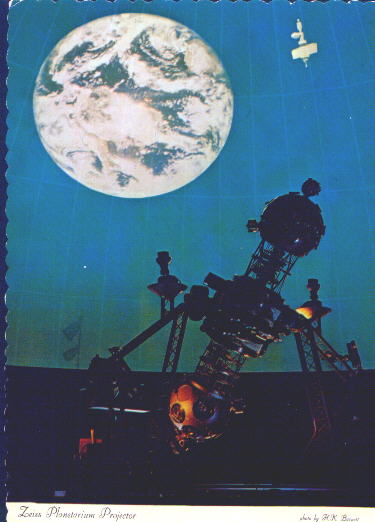
These 2007 photographs show the difference between the largest Full Moon (close to lunar perigee)
and the smallest Full Moon (close to lunar apogee), visible from Earth.
By Glenn A. Walsh
Reporting for SpaceWatchtower
For the second month in a row, people looking at the Moon will see the smallest Full Moon of the year, late Wednesday evening. Of course, this occurs as this month marks the beginning of a New Year, and the patterns of moon phases and lunar orbit are somewhat similar in two consecutive months.
Lunar apogee occurs this month on Wednesday, January 15 at 9:00 p.m. EST (January 16, 2:00 Coordinated Universal Time), when the Moon will be 406,532 kilometers from the Earth. The Moon phase of Full Moon that very same evening, at 11:52 p.m. EST (January 16, 4:52 Coordinated Universal Time), results in the January Full Moon being the smallest Full Moon in 2014. Since Full Moon occurs so close to the Moon's farthest point in its orbit from the Earth (most of the time, Full Moon does not occur so far from Earth), the Moon will look slightly smaller than it did at the beginning of the month during lunar perigee on New Year's Day, when the Moon was 356,923 kilometers from the Earth.
To most Native Americans, the Full Moon of January was known as the Wolf Moon (although some references refer to the December Full Moon as the "Wolves" Moon). Of course this refers to the hungry wolf packs howling on cold and snowy night outside Indian villages.
The Full Moon in January, in the Northern Hemisphere, was also known as the Old Moon, the Moon After Yule, Difficulty Moon, and Black Smoke Moon. And, some Indian tribes referred to this Full Moon as the Snow Moon, although most tribes used the Snow Moon name for the Full Moon of February.
In the Southern Hemisphere, the Full Moon of January was known as the Hay Moon, Buck Moon, Thunder Moon, and Mead Moon.
More on the Full Moon: Link >>> http://en.wikipedia.org/wiki/Full_moon
More on Full Moon names ---
Link 1 >>> http://earthsky.org/astronomy-essentials/full-moon-names
Link 2 >>> http://en.wikipedia.org/wiki/Full_moon#Harvest_and_Hunter.27s_moons
Link 3 >>> http://www.farmersalmanac.com/full-moon-names/
Source: Glenn A. Walsh Reporting for SpaceWatchtower, a project of Friends of the Zeiss.
Related Blog Posts ---
Earth Closest to Sun Sat. Morning (2014 Jan. 4):
Link >>> http://spacewatchtower.blogspot.com/2014/01/earth-closest-to-sun-sat-morning.html
Smallest Full Moon of Year: Dec. 17, 4:28 a.m. (2013 Dec. 14):
Link >>> http://spacewatchtower.blogspot.com/2013/12/smallest-full-moon-of-year-dec-17-428-am.html
2014: 75th Year of Pittsburgh's Buhl Planetarium

Want to receive SpaceWatchtower blog posts in your inbox ?
Send request to < spacewatchtower@planetarium.cc >..
gaw
Glenn A. Walsh, Project Director,
Friends of the Zeiss < http://buhlplanetarium.tripod.com/fotz/ >
Electronic Mail - < gawalsh@planetarium.cc >
About the SpaceWatchtower Editor/Author: < http://buhlplanetarium.tripod.com/#GAW >
SpaceWatchtower Blog: < http://spacewatchtower.blogspot.com/ >
Also see: South Hills Backyard Astronomers Blog: < http://shbastronomers.blogspot.com/ >
Barnestormin: Writing, Essays, Pgh. News, & More: < http://www.barnestormin.blogspot.com/ >
SPACE & SCIENCE NEWS, ASTRONOMICAL CALENDAR:
< http://buhlplanetarium.tripod.
Twitter: < https://twitter.com/spacewatchtower >
Facebook: < http://www.facebook.com/pages/
Author of History Web Sites on the Internet --
* Buhl Planetarium, Pittsburgh:
< http://www.planetarium.
* Adler Planetarium, Chicago:
< http://adlerplanetarium.
* Astronomer, Educator, Optician John A. Brashear:
< http://johnbrashear.tripod.com >
* Andrew Carnegie & Carnegie Libraries:
< http://www.andrewcarnegie.
* Civil War Museum of Andrew Carnegie Free Library:
< http://garespypost.tripod.com >
* Duquesne Incline cable-car railway, Pittsburgh:
< http://inclinedplane.tripod.
* Public Transit:
< http://andrewcarnegie2.tripod.
No comments:
Post a Comment